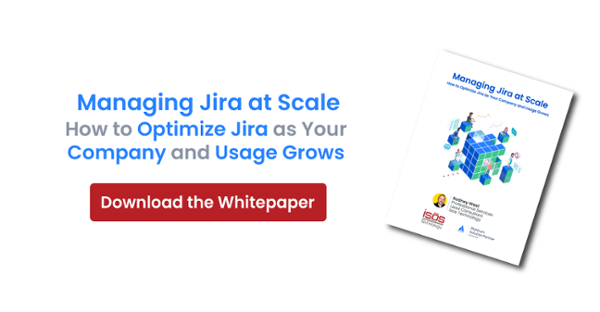 If you were watching TV in any capacity in 2019, you probably heard or saw Marie Kondo touting the “Life-Changing Magic of Tidying Up,” along with a lot of talk about whether things “spark joy.” Kondo had a show where she went from home to home helping families get some sense of order in their life just by tidying things up around the house using her “KonMari” method. These houses weren’t necessarily scenes straight out of Hoarders, but just everyday, lived-in, family homes where things had gotten away from them.
If you were watching TV in any capacity in 2019, you probably heard or saw Marie Kondo touting the “Life-Changing Magic of Tidying Up,” along with a lot of talk about whether things “spark joy.” Kondo had a show where she went from home to home helping families get some sense of order in their life just by tidying things up around the house using her “KonMari” method. These houses weren’t necessarily scenes straight out of Hoarders, but just everyday, lived-in, family homes where things had gotten away from them.
For Jira administrators, our Jira instances can be a bit of a home. We spend most of our time in it, and sometimes it can get just a little bit away from us. We might make a note of something we need to reorganize or archive, and then accidentally let the task get buried under more pressing issues. Next thing you know, you take a look around, and the “mess” can feel overwhelming. Cleaning up your Jira instance doesn’t have to be overwhelming! While we can’t fully replicate Marie Kondo’s successful method, we can apply some of the same ideas to make sorting through the cleanup easier to handle!
Why do a cleanup?
Before we get to the steps, you may be asking yourself “Why do we even need to clean it up?” Per Atlassian, instance cleanups should be considered regular maintenance and have the following benefits:
- Better performance: With a lighter load, you’ll likely notice that your instances perform better and more smoothly
- Easier & more effective querying: By archiving and deleting things you don’t need, users will see better and more relevant search results
- More productive teams: Teams don’t always know to ask a Jira admin to remove functions they don’t need. By answering this need for them, they’ll be able to navigate Jira more efficiently and produce better results from it
- Happier teams!: A more clean workspace should make your users happier to utilize Jira. With fewer customizations cluttering their screens, they’ll be more inclined to adopt it
Isos Technology also has a thorough write-up of the whys and hows of cleaning up your Atlassian instances.
Rule 1 - Commit Yourself to the Cleanup Effort
Before getting started, you need to make sure you’re ready to commit to doing a cleanup. While there’s no harm in cleaning up one or two things on the side, it doesn’t achieve the same thing as a dedicated cleanup effort. Make time for yourself to work on it, and track it as you would any other project you’re working on. It’s easy to fall into the trap of thinking it’s not a “real” project, but as mentioned before, it is recommended maintenance. Avoid it being swept under the rug by making yourself a ticket like you would for any other maintenance you perform.
Rule 2 - Imagine Your Ideal Jira Instance
What are all of the little things that have been nagging at you in your Jira instance? You know, the ones that you didn’t want to implement in the first place, or maybe the ones that you see every time you go into a certain project and think “Ugh, I need to fix that one of these days.” Compile a list of these things so you don’t forget to address them as a part of your effort. Also, try to make a habit of notating them in the future so that when it comes time for your next cleanup, you already have a list of the things you wanted to take care of.
Don’t be afraid to dream a little big here! If there are automations you’ve been wanting to implement, this could be a great time to make room for them as well. Automating processes can be helpful for future cleanup efforts, too.
Rule 3 - Check-in Before Discarding Anything
Although these days Jira offers us archiving features for things like Projects and Issues, some things, namely Custom Fields, might need to be deleted. You can analyze the usage of a field to determine if it’s still being used and how often, but even if you determine that a field hasn’t been used in a year, it’s a good idea to check in with any stakeholders before completely purging it. If you suspect that a field might have to do with anything involving Legal, HR, or Finance, for example, you may want to touch base to ensure you won’t be violating any sort of retention policies by eliminating the data along with the field. Consider limiting it via context or exporting the data before deleting anything.
Rule 4 - Clean Up By Category
Tackling your whole Jira instance in one effort can seem intimidating at first, especially with larger instances. Breaking it into different “parts” of Jira can help make it much more digestible. Atlassian recommends doing your cleanup in the following order:
- Projects - Look for opportunities to archive stale projects. Archiving will make sure you don’t lose any data but will still see improvements in query results and reindexing.
- Issues - Similar to what you did with projects, look for opportunities to archive stale issues. Again, archiving them will not delete the data, but will instead “move it out of the way,” so to speak.
- Custom Fields - Identify any custom fields that are no longer being used that can be deleted. Also, you can look for any custom fields that have a “Global” context that can instead be set to specific projects to help improve performance.
- Inactive Users - Users that have left your organization should be removed as they leave, but it’s a good idea to comb through and make sure nobody was missed. You can figure this out by looking at the last login dates. This helps avoid assigning tickets to the wrong people and frees up licenses.
In addition to those categories Atlassian recommends, you can also check the following areas for things that are no longer being used by any projects: Workflows, Workflow Schemes, Screens, Screen Schemes, Issue Types, Issue Type Schemes, Permission Schemes
If any of these are completely unused by any projects, it might be a good time to get rid of them. Additionally, you can look for duplicates and consolidate them to make project configuration easier for administrators.
Rule 5 - Does it “Spark Functionality”?
Let’s be honest - the things we’re talking about here don’t necessarily “spark joy,” so instead, try to see if it “sparks functionality.” If you’re torn on whether to keep or archive something, be honest with yourself. Is it serving a purpose right now? If the answer to that is no, then it’s probably time to bid it adieu. You can always un-archive a project or an issue, and you can re-create a custom field if the need ever arises again. If we listen to all of the “what-if” scenarios, then we risk defeating the purpose of the whole cleanup. Revisit your “ideal Jira instance” and remember why you started!
Jira is tidy - now what?
The first cleanup effort is always the most strenuous. Once it’s finished, make a habit of doing it regularly. Scheduling recurring cleanups quarterly, semi-annually, or annually (depending on your instance size) will leave you with quicker, easier cleanups in the future.
You can also revisit any pending requests you might have from your users. Cleaning up the Jira instance may have freed up space to implement things you couldn’t do for them before due to your configuration at the time.
Finally, your cleanup will likely have shown you the areas that need some improvement. For example, if you found an inordinate amount of inactive users who were still taking up a license, this is a good opportunity to establish a process to prevent that in the future. You can also set up governance to encourage good upkeep.
Hopefully, by using these rules, your cleanup will be easier to organize and follow through on. Although it’s not a physical home, our Jira instances are where we spend most of our days, so it’s important to keep them livable. With regular upkeep and good governance, we can even have them spark joy for our users and us.
Sign up to receive more great content
Learn more about Atlassian and how Isos can help by signing up to receive our latest blogs, eBooks, whitepapers and more.














